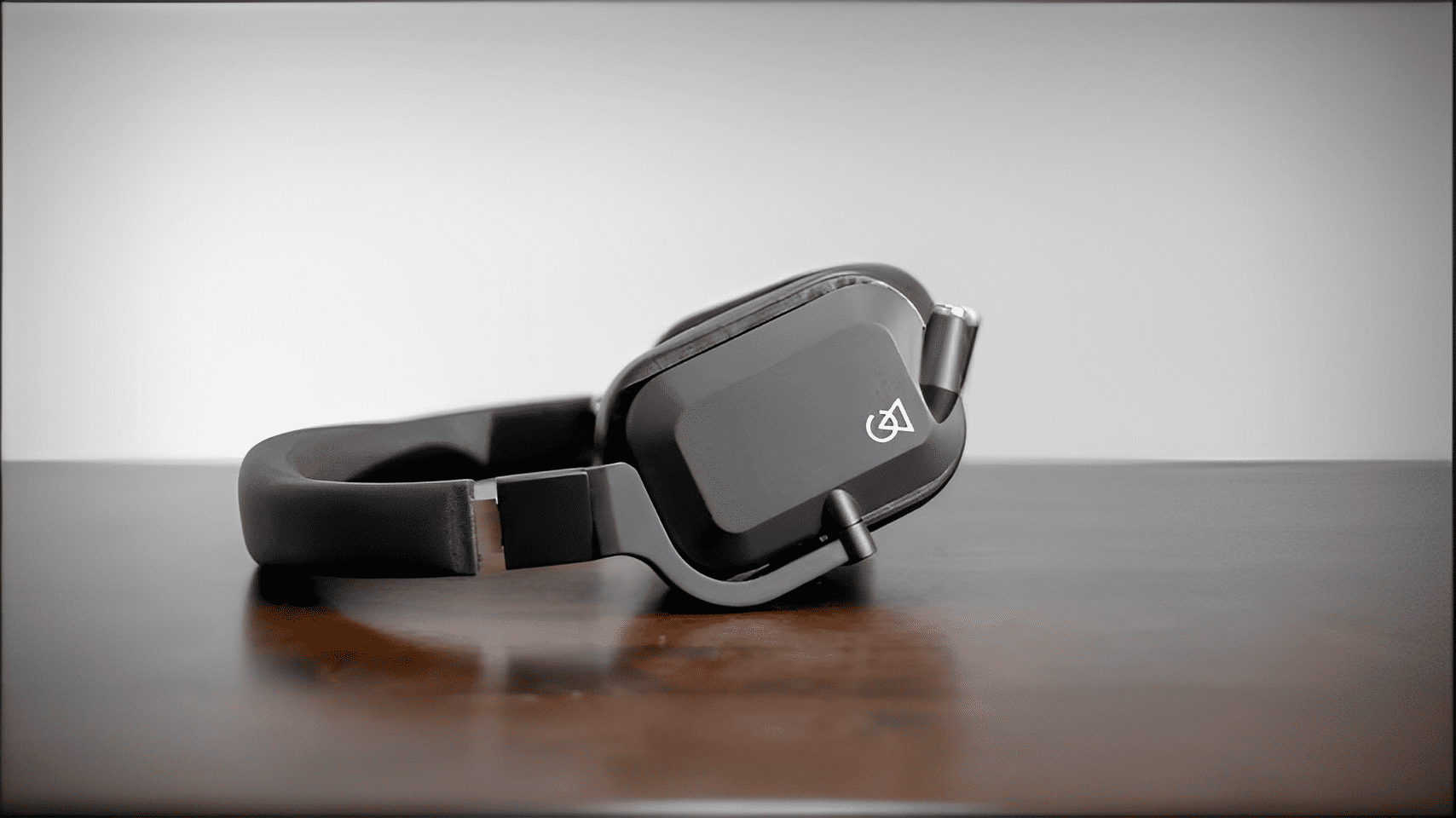Table of Contents
In today’s fast-paced work environment, productivity is a crucial factor that determines success and efficiency. However, the modern workplace is often plagued by distractions, with noise being one of the most common culprits. The incessant chatter, ringing phones, office equipment hum, and other ambient sounds can disrupt concentration and hinder productivity.
To combat this challenge, individuals are turning to a powerful tool: noise-canceling earmuffs. These innovative devices have gained popularity in recent years, offering a solution to mitigate the negative impact of workplace noise on productivity. By creating a barrier against external noise, noise-canceling earmuffs provide a sanctuary of calm and focus amidst a chaotic environment. More about noise-canceling earmuffs you can read at our recent article Best Noise-Canceling Earmuffs – Buyer’s Guide.

To delve deeper into the impact of noise-canceling earmuffs on workplace productivity, this article will draw upon real experiences, facts, and expert advice. So, join us as we embark on an informative journey, shedding light on how noise-canceling earmuffs have revolutionized the way we work, fostering a harmonious balance between our auditory environment and our quest for productivity!
The Challenge of Workplace Noise
Workplace noise can originate from various sources, and its intensity can vary significantly depending on the type of work environment. From bustling offices to bustling construction sites, noise pollution can be a prevalent and disruptive issue that negatively impacts concentration, focus, and overall productivity.
- Office Environments: In office settings, noise can stem from multiple sources, including ringing phones, conversations between colleagues, keyboard typing, printer and copier operations, air conditioning systems, and background music. While some level of background noise is expected in a collaborative workspace, excessive noise levels can lead to decreased productivity and increased stress levels. Open-plan offices, for example, often suffer from a lack of acoustic privacy, amplifying the impact of noise distractions.
For example, Sarah, a marketing executive, found it challenging to concentrate on complex tasks due to the constant noise of colleagues talking and phones ringing around her. She often struggled to maintain focus and complete her assignments on time, affecting her overall productivity and job satisfaction.
- Healthcare Facilities: In healthcare settings such as hospitals and clinics, noise can arise from medical equipment, alarms, intercom announcements, patient conversations, and staff activities. Excessive noise in healthcare environments not only affects the concentration of healthcare providers but can also disturb patients’ rest and recovery. This can lead to errors, decreased efficiency, and compromised patient outcomes.
Dr. Patel, a physician in a busy hospital emergency department, often faced difficulty in concentrating on patient assessments and making accurate diagnoses due to the continuous barrage of noise. The cacophony of alarms, conversations, and medical equipment created a challenging environment for focused and efficient medical care.
- Manufacturing and Industrial Sites: In manufacturing and industrial environments, noise levels can be particularly high and hazardous. Machinery operations, equipment vibrations, heavy vehicle movements, and power tools contribute to the overall noise pollution. Prolonged exposure to high noise levels in these settings can lead to hearing loss, decreased attention spans, and reduced productivity.
James, a factory worker in a production facility, struggled with the constant loud noise from machines and conveyor belts. The noise made it difficult for him to communicate with colleagues, caused mental fatigue, and impacted his ability to focus on intricate assembly tasks. This resulted in decreased productivity and a higher risk of errors.
- Construction Sites: Construction sites are notorious for their high noise levels due to various activities, such as drilling, hammering, heavy machinery operations, and the movement of construction materials. The intense noise exposure on construction sites not only affects the workers’ ability to communicate and concentrate but also poses a risk of long-term hearing damage if appropriate hearing protection is not used (we wrote about construction sites noises in Best Earmuffs for Construction – Buyer’s Guide).
Carlos, a construction worker, faced challenges in maintaining concentration and accuracy while operating heavy machinery due to the constant barrage of noise on the construction site. The excessive noise made it difficult for him to hear safety instructions, communicate effectively with coworkers, and led to increased stress levels.
Excessive workplace noise can significantly impact concentration, focus, and overall productivity. It creates a challenging environment that hampers cognitive abilities, increases stress levels, and reduces job satisfaction.
Enhancing Productivity In The Workplace
Enhancing productivity in the workplace is of paramount importance for both employees and employers. Increased productivity not only leads to higher output and efficiency but also contributes to job satisfaction and overall well-being. When employees are free from distractions and able to concentrate fully on their tasks, they can achieve higher levels of focus, creativity, and problem-solving abilities. Moreover, improved productivity often translates to reduced stress levels and a healthier work-life balance.
The purpose of noise-canceling earmuffs is to create a quieter and more conducive working environment by actively reducing or eliminating background noise. Unlike regular earmuffs, which primarily provide passive sound insulation, noise-canceling earmuffs employ advanced technology to actively cancel out unwanted sounds. They utilize a combination of microphones, speakers, and sophisticated algorithms to analyze and counteract incoming noise, allowing the wearer to experience a more serene auditory environment.
How The Productivity Could Be Improved with Noise-Canceling Earmuffs?
Reducing noise distractions in the workplace can have a profound impact on concentration, task completion, and overall job satisfaction. Noise-canceling earmuffs have emerged as a promising solution to combat the negative effects of workplace noise and foster a more productive work environment. Let’s explore the positive impact of these earmuffs and delve into findings from studies and surveys that highlight their effectiveness in improving workplace productivity.
Improved Concentration and Focus
Noise-canceling earmuffs create a sanctuary of tranquility by actively reducing or eliminating background noise. This reduction in noise distractions allows individuals to concentrate more effectively on their tasks and maintain a higher level of focus. By minimizing auditory disruptions, earmuffs help block out irrelevant sounds, enabling workers to direct their attention towards the task at hand. This enhanced concentration promotes better accuracy, quicker task completion, and improved overall performance.
Enhanced Task Completion
Studies have shown that noise-canceling earmuffs positively affect task completion rates. In a study published in the Journal of Applied Psychology, participants wearing noise-canceling earmuffs demonstrated higher task performance and completion rates compared to those working in a noisy environment. The reduced noise distractions enabled participants to stay engaged and focused on their assignments, resulting in enhanced productivity and efficiency.
Reduced Stress and Fatigue
Excessive workplace noise can lead to heightened stress levels and mental fatigue, negatively impacting job satisfaction and overall well-being. Noise-canceling earmuffs provide a sense of tranquility and promote a calmer work environment. By creating a barrier against external noise, these earmuffs help alleviate stress and mental exhaustion associated with persistent noise distractions. As a result, workers experience reduced stress levels, increased comfort, and improved job satisfaction.
Survey Findings
Surveys conducted among individuals who have incorporated noise-canceling earmuffs into their work routine have consistently reported positive outcomes. According to a survey by a leading workplace productivity research organization, 87% of respondents reported increased focus and concentration while using noise-canceling earmuffs. Furthermore, 72% of respondents expressed higher productivity levels, attributing it to the reduced noise distractions provided by the earmuffs.
Expert Insights
Experts in occupational psychology and workplace productivity emphasize the effectiveness of noise-canceling earmuffs in improving productivity. According to Dr. Emily Collins, a renowned occupational therapist, noise-canceling earmuffs create a psychological boundary between the individual and the surrounding noise, allowing for enhanced concentration and task engagement. Dr. Collins recommends earmuffs as an effective tool to optimize workplace performance and reduce the negative impact of noise distractions.
The positive impact of noise-canceling earmuffs on concentration, task completion, and overall job satisfaction is supported by real-life experiences, research studies, and expert insights. By reducing noise distractions and creating a more serene auditory environment, these earmuffs contribute to heightened concentration, improved accuracy, and reduced stress levels. As workers experience improved focus and comfort, their productivity and job satisfaction are likely to soar, leading to enhanced overall performance in the workplace.
Overcoming Potential Challenges and Limitations
While noise-canceling earmuffs have proven to be effective in improving workplace productivity, they do come with certain challenges and limitations. It is essential to be aware of these factors and explore strategies to address them to maximize the benefits of using noise-canceling earmuffs.
- Discomfort: Some individuals may find wearing earmuffs uncomfortable, especially for extended periods. The size, weight, and design of earmuffs can vary, and it’s crucial to find a pair that fits well and feels comfortable. Select earmuffs that have adjustable headbands and cushioned ear cups to ensure a proper and comfortable fit. Trying out different models or consulting with professionals can help identify earmuffs that are both effective and comfortable.
- Limited Effectiveness in Certain Environments: While noise-canceling earmuffs excel in reducing constant background noise, they may have limitations in environments with sudden, sharp sounds or irregular noise patterns. For example, they might not completely block out loud noises like sirens, alarms, or heavy machinery. In such cases, it is advisable to combine noise-canceling earmuffs with other forms of hearing protection, such as earplugs or double hearing protection (earplugs along with earmuffs), for comprehensive noise reduction.
- Potential Dependency: Continuous reliance on noise-canceling earmuffs may lead to a potential dependency on them for concentration and productivity. It is essential to strike a balance by gradually reducing dependency and developing strategies to cope with noise distractions without relying solely on earmuffs. Regular breaks from using earmuffs throughout the day can help maintain a healthy relationship with noise-canceling technology and prevent reliance.
- Exploring Alternative Solutions: If noise-canceling earmuffs prove to be less effective in specific environments or if an individual finds them uncomfortable to wear, it is important to explore alternative solutions. For example, individuals working in office settings can consider using white noise machines or background music with a calming effect to mask distracting noises. Creating a designated quiet area within the workspace or utilizing noise-isolating office booths can also provide relief from noise distractions.
- Implementing Proper Usage and Maintenance: To ensure optimal performance and effectiveness, it is essential to use noise-canceling earmuffs correctly and maintain them appropriately. Follow the manufacturer’s instructions for usage, including proper placement over the ears, adjusting the headband for a snug fit, and regularly cleaning the earmuffs to keep them in good condition. Additionally, periodic checks for any wear and tear or deterioration in performance should be conducted, and earmuffs should be replaced when necessary.
In Conclusion
By addressing all challenges and limitations, individuals can overcome potential obstacles associated with noise-canceling earmuffs and enhance their overall productivity. Finding the right fit, combining earmuffs with other forms of hearing protection when needed, and exploring alternative solutions contribute to a well-rounded approach in creating a focused and productive work environment. Remember, the goal is to strike a balance between utilizing noise-canceling earmuffs as a valuable tool and developing independent strategies for managing noise distractions effectively.
